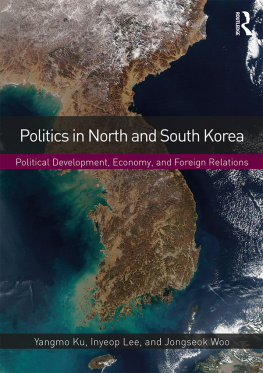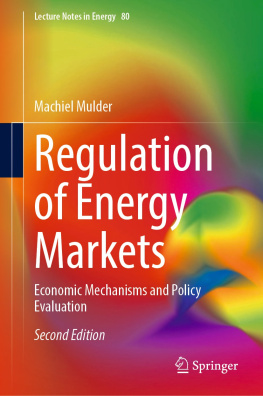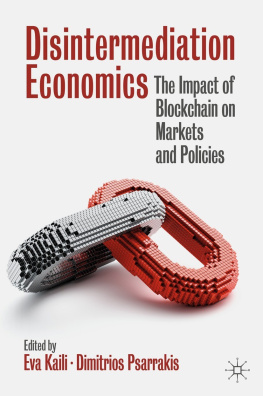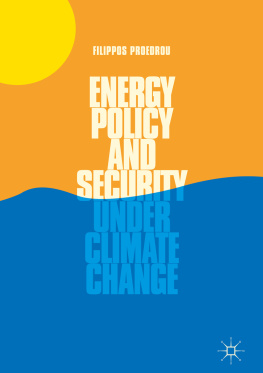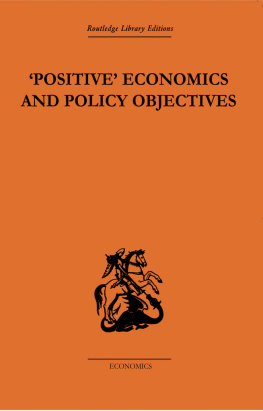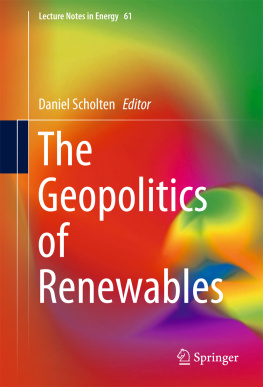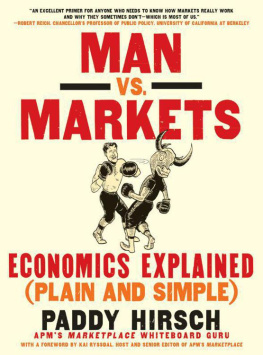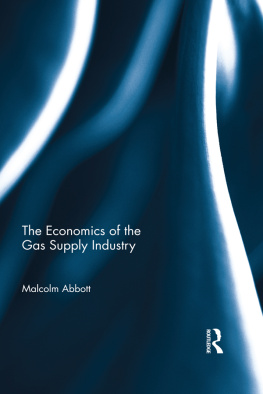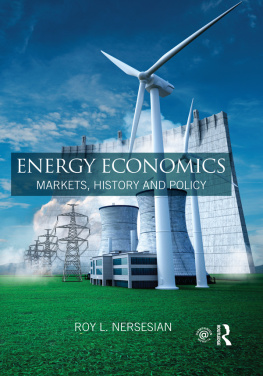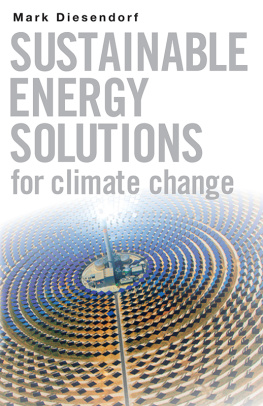Routledge. - Energy economics: markets, history and policy
Here you can read online Routledge. - Energy economics: markets, history and policy full text of the book (entire story) in english for free. Download pdf and epub, get meaning, cover and reviews about this ebook. City: London;New York, year: 2016, publisher: Routledge, genre: Politics. Description of the work, (preface) as well as reviews are available. Best literature library LitArk.com created for fans of good reading and offers a wide selection of genres:
Romance novel
Science fiction
Adventure
Detective
Science
History
Home and family
Prose
Art
Politics
Computer
Non-fiction
Religion
Business
Children
Humor
Choose a favorite category and find really read worthwhile books. Enjoy immersion in the world of imagination, feel the emotions of the characters or learn something new for yourself, make an fascinating discovery.
- Book:Energy economics: markets, history and policy
- Author:
- Publisher:Routledge
- Genre:
- Year:2016
- City:London;New York
- Rating:4 / 5
- Favourites:Add to favourites
- Your mark:
- 80
- 1
- 2
- 3
- 4
- 5
Energy economics: markets, history and policy: summary, description and annotation
We offer to read an annotation, description, summary or preface (depends on what the author of the book "Energy economics: markets, history and policy" wrote himself). If you haven't found the necessary information about the book — write in the comments, we will try to find it.
Routledge.: author's other books
Who wrote Energy economics: markets, history and policy? Find out the surname, the name of the author of the book and a list of all author's works by series.
Energy economics: markets, history and policy — read online for free the complete book (whole text) full work
Below is the text of the book, divided by pages. System saving the place of the last page read, allows you to conveniently read the book "Energy economics: markets, history and policy" online for free, without having to search again every time where you left off. Put a bookmark, and you can go to the page where you finished reading at any time.
Font size:
Interval:
Bookmark:
First published 2016
by Routledge
2 Park Square, Milton Park, Abingdon, Oxon OX14 4RN
and by Routledge
711 Third Avenue, New York, NY 10017
Routledge is an imprint of the Taylor & Francis Group, an informa business
2016 Roy L. Nersesian
The right of Roy L. Nersesian to be identified as author of this work has been asserted in accordance with the Copyright, Designs and Patents Act 1988.
All rights reserved. No part of this book may be reprinted or reproduced or utilised in any form or by any electronic, mechanical, or other means, now known or hereafter invented, including photocopying and recording, or in any information storage or retrieval system, without permission in writing from the publishers.
Trademark notice: Product or corporate names may be trademarks or registered trademarks, and are used only for identification and explanation without intent to infringe.
British Library Cataloguing in Publication Data
A catalogue record for this book is available from the British Library
Library of Congress Cataloging in Publication Data
Catalog record for this book has been requested
ISBN: 978-1-138-85837-4 (hbk)
ISBN: 978-1-315-71806-4 (ebk)
Typeset in Bembo
by Book Now Ltd, London

Please visit the Companion Website at www.routledge.com/cw/nersesian for the following additional sections.
Chapter 2
Early History of Electricity
Generating Electricity Commercially
When Demand Exceeds Supply
Real Lesson of California
Chapter 3
The Role of Charcoal and Wood Pellets
Biomass in Home Heating
Two Processes for Making Ethanol
Proposed Solutions
Traditional Means of Making Cellulosic Ethanol
Chapter 4
First Energy Crisis
Origin and History of Coal
Coal and the Industrial Revolution
Rise and Fall of King Coal
Chapter 5
History of Lighting
History of Oil
Enter John D. Rockefeller
Enter Marcus Samuel
Enter British Petroleum
Emergence of Oil as a Strategically Vital Commodity
Opening Up the Middle East
Chapter 6
Earth as an Oil Manufacturer
Formation of Oil
Biotic Theory of Origin
Abiotic Theory of Origin
Oil Exploration and Production
Drilling Rights
Drilling Operations
Offshore Exploration Rigs
Offshore Production Rigs
Decision to Drill a Production Well
Getting Oil to a Refinery
Refining
Chapter 7
History of Coal Gas
History of Natural Gas
Battle over Lighting
Long Distance Transmission
Federal Regulation
War Years
Last Stop before Total Regulation
Chapter 8
Nuclear Incidents and Accidents
Three Mile Island Incident
Chernobyl Nuclear Accident
Fukushima Daiichi Accident
Disposal of Spent Fuel
Birth of the Environmental Movement
Saga of the Hoover and Glen Canyon Dams
Saga of Aswan High Dam
Chapter 9
Solar Power
Historical Development of Thermal Solar Power
Thermal Solar Energy for Heating Water
Thermal Solar Energy for Generating Electricity
Wind Power
Historical Development
Government Involvement in Developing Wind Turbines
Chapter 10
Hydrogen Economy
Historical Background
Hydrogen Today
Ocean Power
Tidal Power
Wave Power
Chapter 11
Environment
US Clean Air Acts
Cross-State Air Pollution Rule
Climate Change Conferences
Sulfur in Diesel Fuel
Efficiency and Conservation
Energy Star Program
Light Emitting Diodes and Compact Fluorescent Light Bulbs
US Green Building Council/LEED
Sustainable Energy
Energy Returned on Energy Invested (EROEI)
Figure CW7.1 US Residential Consumers, Cost of Natural Gas
Figure CW7.2 Consumption versus Waste of Natural Gas
Figure CW9.1 Solar Thermal Capacity
Figure CW9.2 Historical Development Solar Thermal Electricity Capacity
Figure CW11.1 EROEI Values for Various Types of Energy
Figure CW11.2 Rise of Energy Input to Sustain Growing Energy Output
Table CW6.1 Historical Development of Refining Processes
Table CW8.1 Examples of Radioactivity in Bq
Table CW8.2 Likely Effects of Whole-body Radiation Doses
Natural Gas
This chapter covers the history of natural gas from its beginning as a manufactured gas made from coal. It is the most regulated of fossil fuels because only one natural gas pipeline can be connected to a house, just as a house can only be connected to one cable for electricity. Like electricity, deregulation/liberalization has changed the nature of regulation considerably in North America and Europe to allow market forces to influence price, but the mechanism by which market forces affect price is still well regulated. How natural gas travels from a resource in the earth to a point of consumption will be described along with growth in the international trade in natural gas and the development of nonconventional sources of methane, including fracking and coal bed methane. The future of natural gas as a replacement for coal and as a motor vehicle fuel will also be covered.
Natural gas is made up of primarily methane, a carbon atom surrounded by four hydrogen atoms. It is the cleanest burning fossil fuel with only water and carbon dioxide as products of combustion. Carbon monoxide emissions are caused by insufficient oxygen to support combustion. Natural gas, with no nitrogen within its chemical structure, releases far less nitrous oxides than oil and coal. Formation of nitrous oxides by oxidization of nitrogen in air during combustion is a function of boiler and burner tip design, not a property of the fuel. Burning natural gas produces virtually no sulfur oxides, and no particulate and metallic emissions.
Its greater ratio of hydrogen to carbon atoms releases less carbon dioxide per unit of energy than coal and oil. Moreover, cogeneration plants fueled by natural gas have a higher thermal efficiency than coal and oil, further lowering carbon dioxide emissions for the same output of electricity.
Reservoir recovery of natural gas fields is about double (7080 percent) that of oil (3040 percent), which lessens the need to continually find new gas fields. Unlike oil, natural gas requires relatively little processing to become pipeline-quality. On the minus side, natural gas has always been a logistics challenge. In the beginning decades of the oil age, much of the natural gas found with crude oil (associated natural gas) was flared (burned) or vented to the atmosphere. Discovery of a natural gas reservoir was treated in the same light as drilling a dry hole! The primitive state of pipeline technology and reliance on reservoir pressure as a motive force to move natural gas through a pipeline restricted natural gas to local markets. Large volumes of natural gas associated with oil production were available with developing oil discoveries in the US Southwest. With natural gas stranded with no nearby markets and no means to get it to distant markets, vast quantities of associated natural gas from oil production were vented to the atmosphere. This waste of a free energy source in the Southwest and the waning of natural gas fields in Appalachia provided an economic impetus to improve pipeline technology to connect suppliers with consumers over long distances in a safe, reliable, and cost-effective manner.
Font size:
Interval:
Bookmark:
Similar books «Energy economics: markets, history and policy»
Look at similar books to Energy economics: markets, history and policy. We have selected literature similar in name and meaning in the hope of providing readers with more options to find new, interesting, not yet read works.
Discussion, reviews of the book Energy economics: markets, history and policy and just readers' own opinions. Leave your comments, write what you think about the work, its meaning or the main characters. Specify what exactly you liked and what you didn't like, and why you think so.




